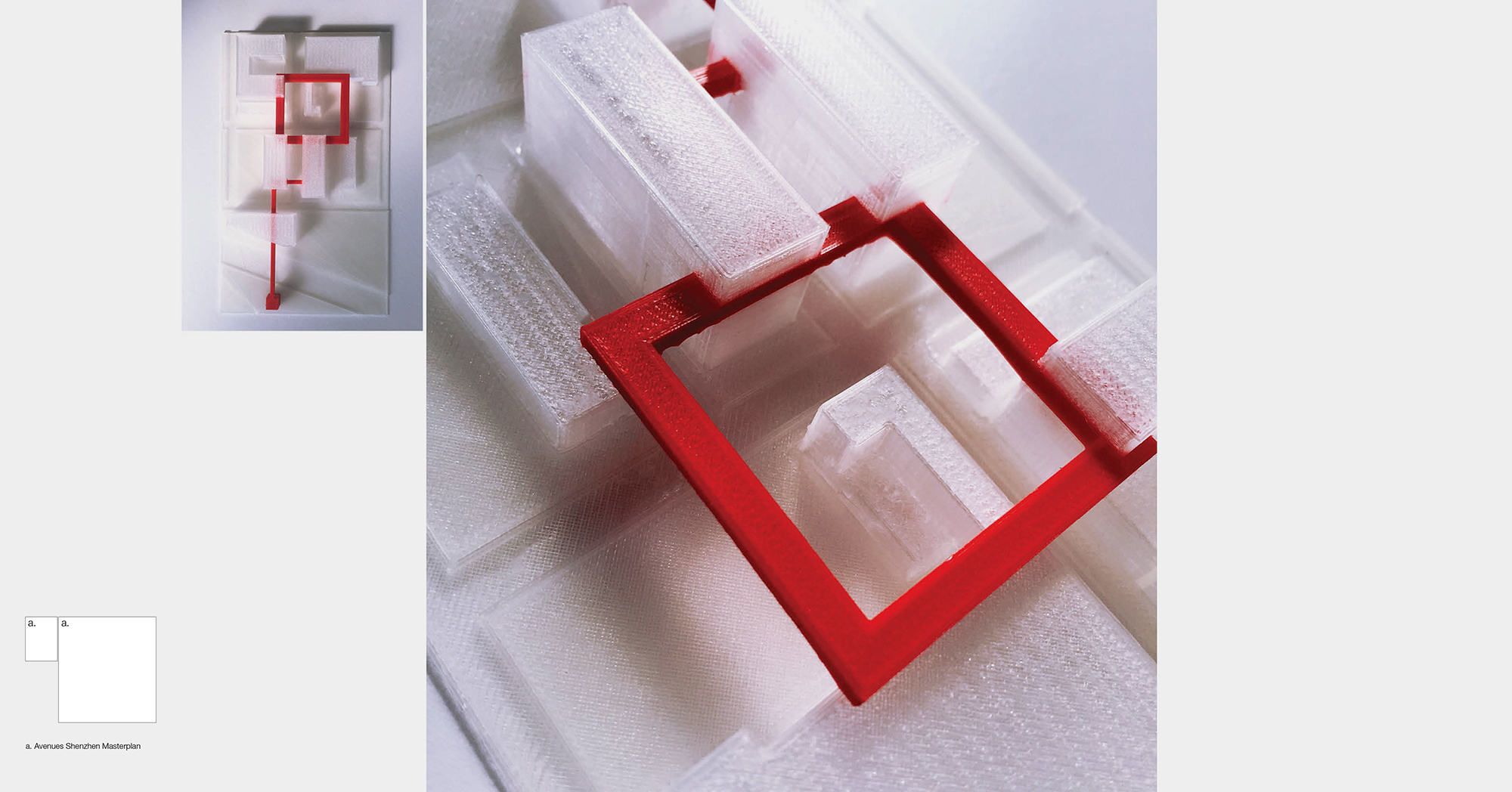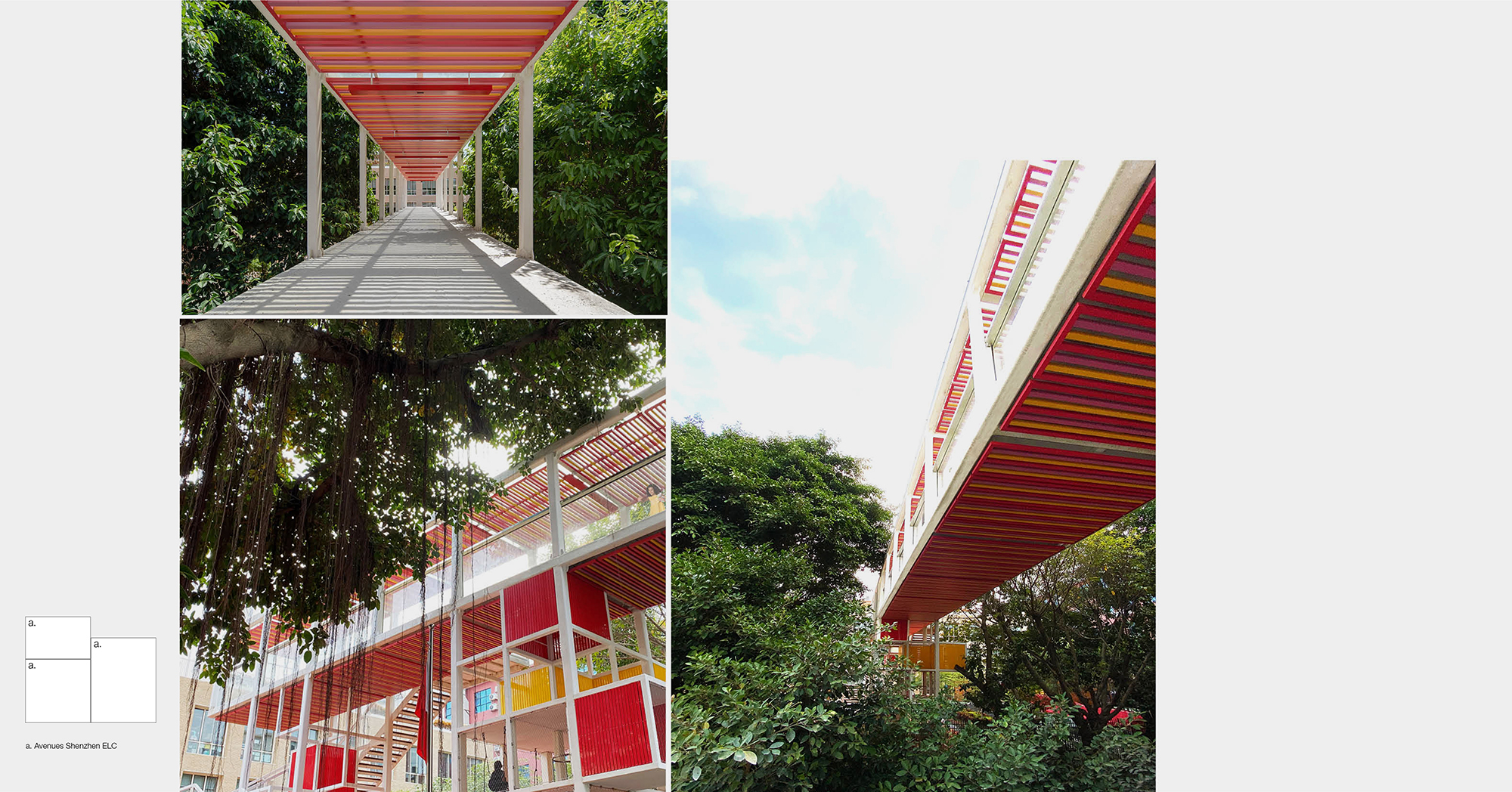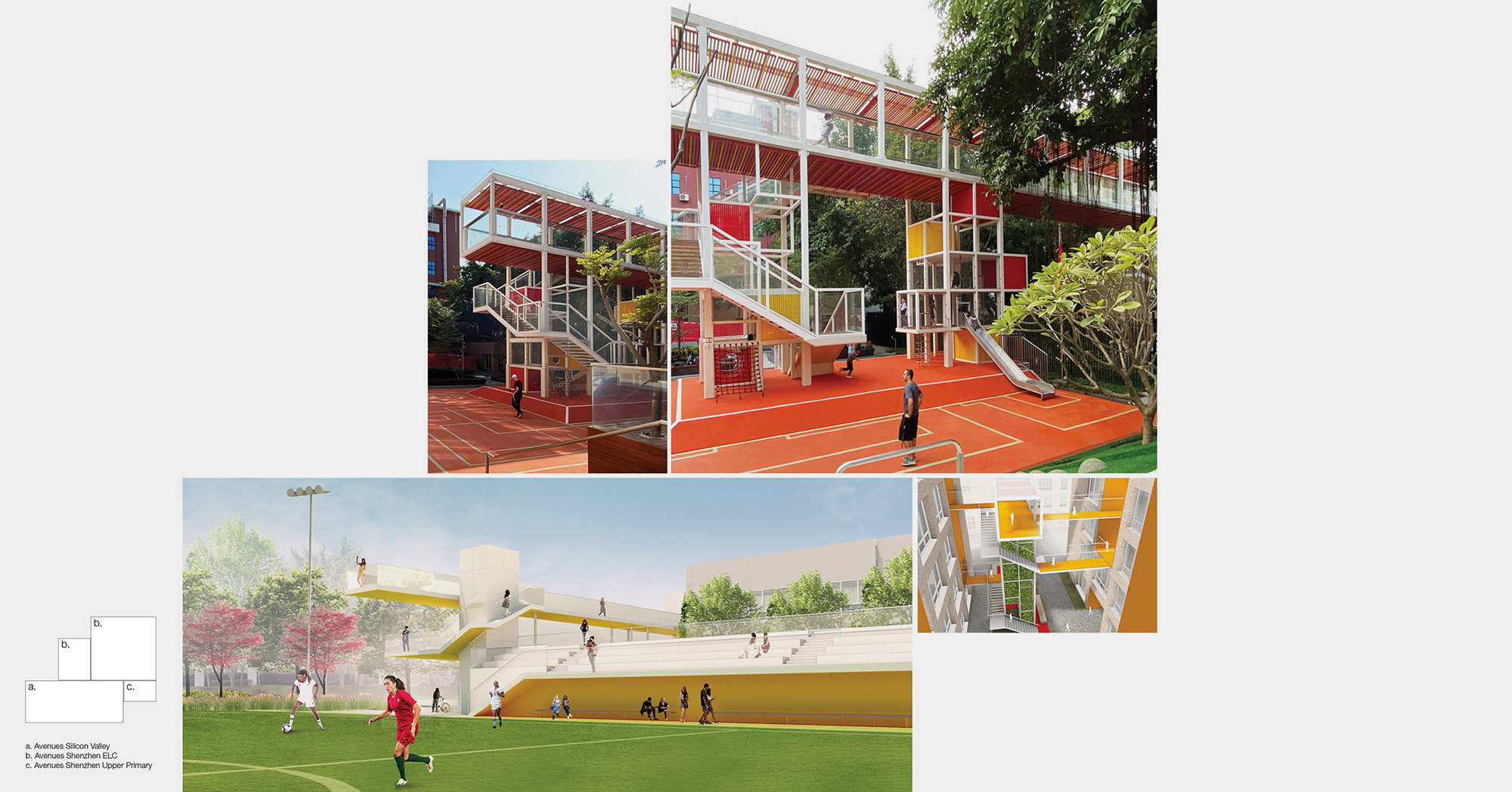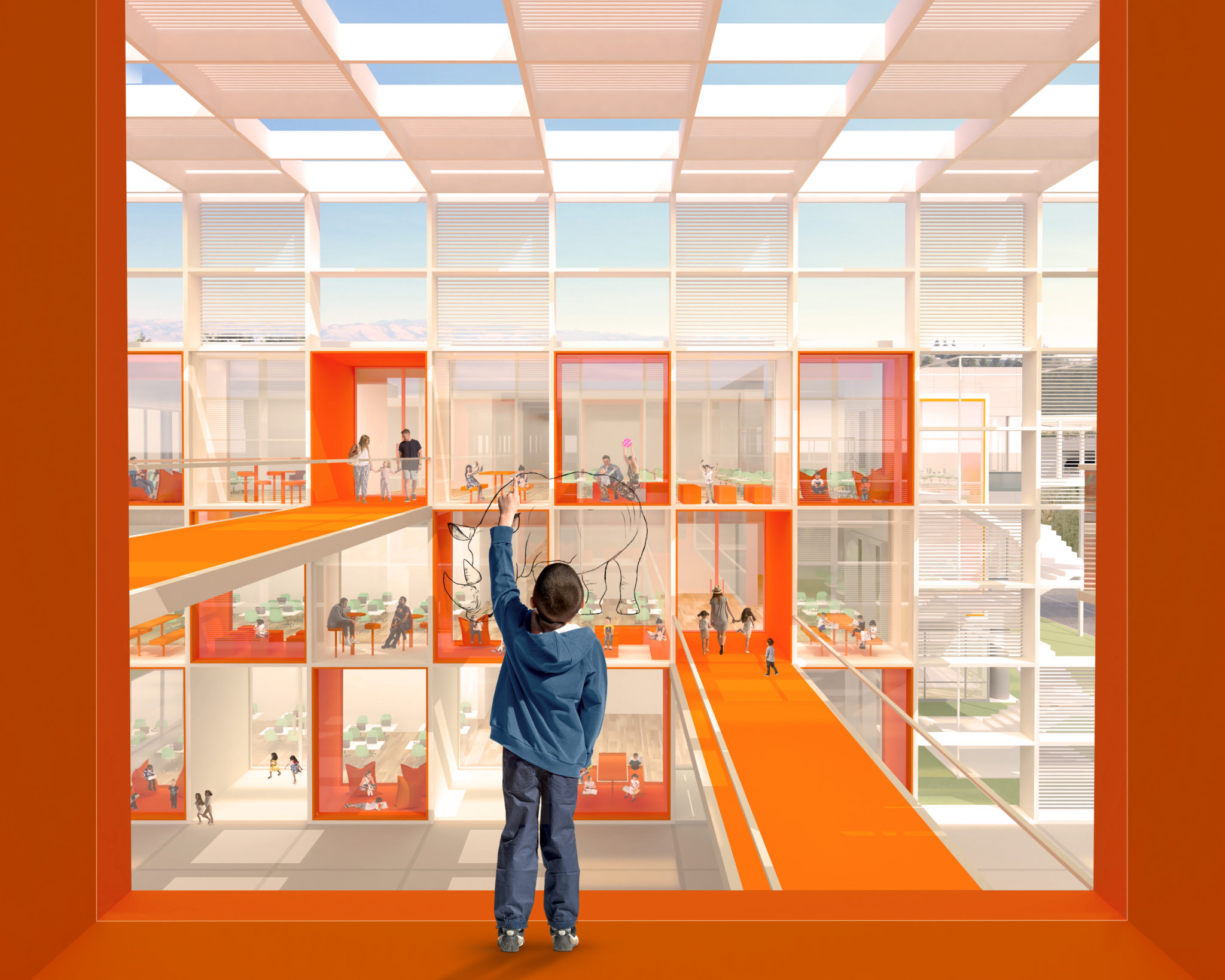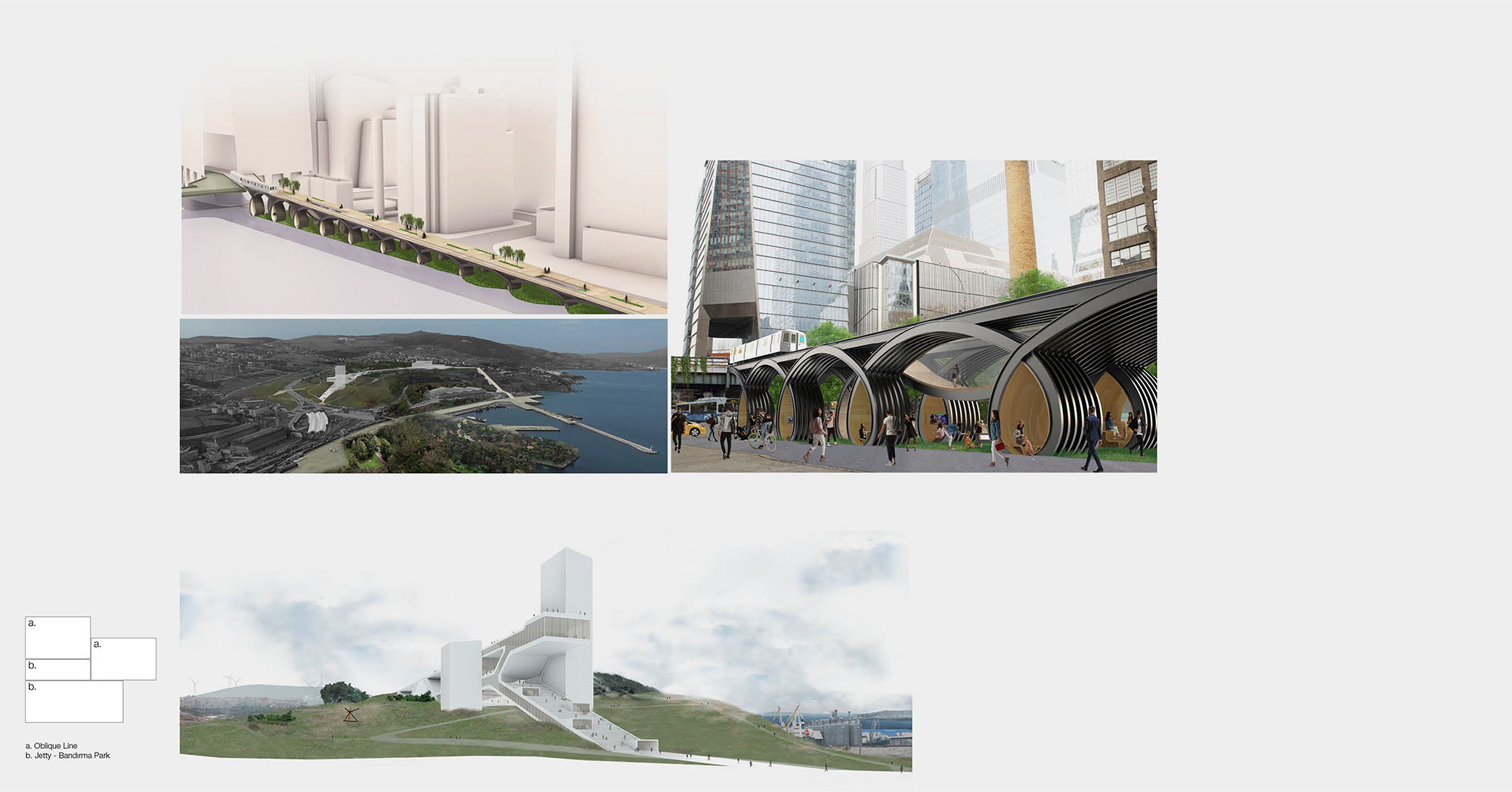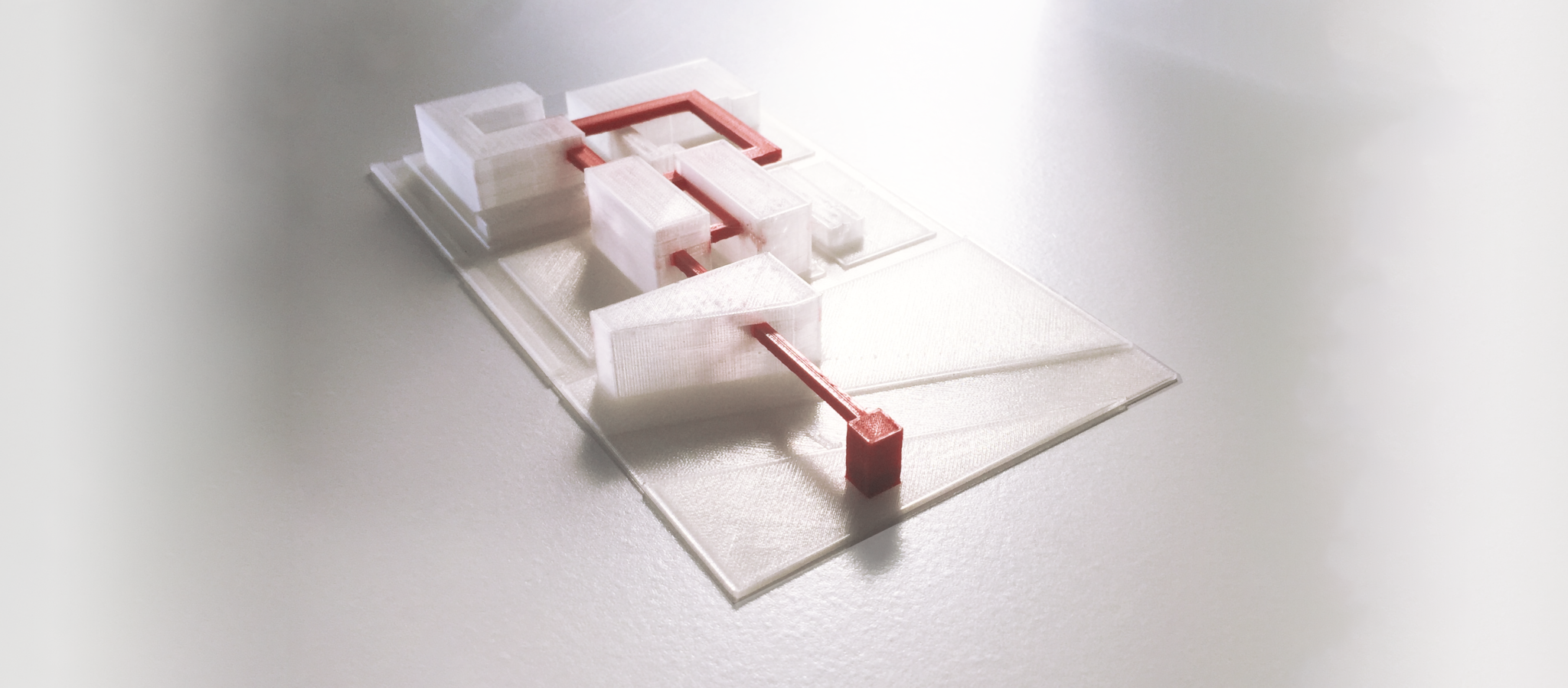 Image © Efficiency Lab for Architecture
Image © Efficiency Lab for ArchitectureThe act of Bridging is used as a device of connection. These connections can manifest as tangible physical structure between two or more elements, but also can represent conceptions of intangible relationships between communities, environments and ideas.
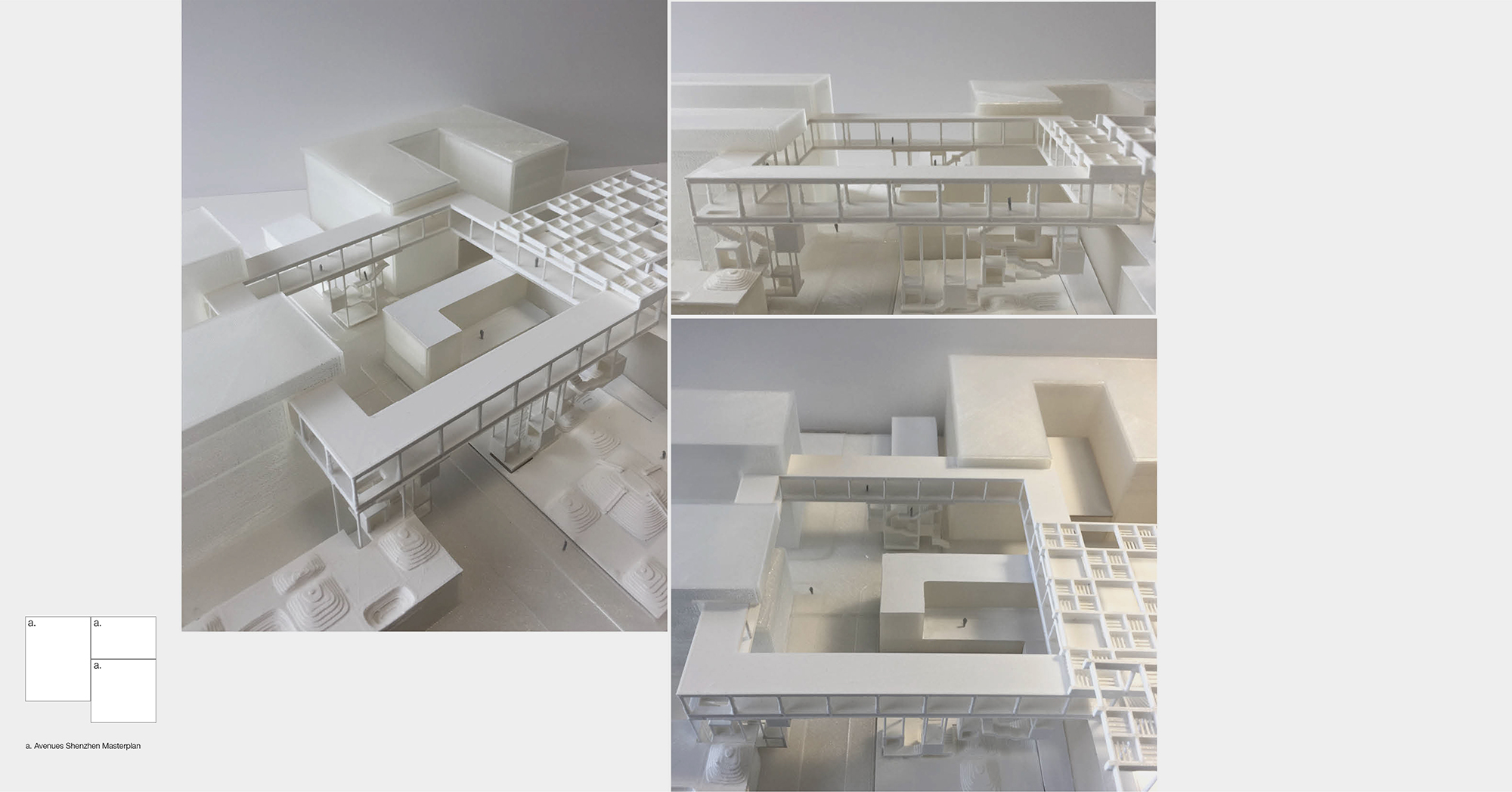 Image © Efficiency Lab for Architecture
Image © Efficiency Lab for Architecture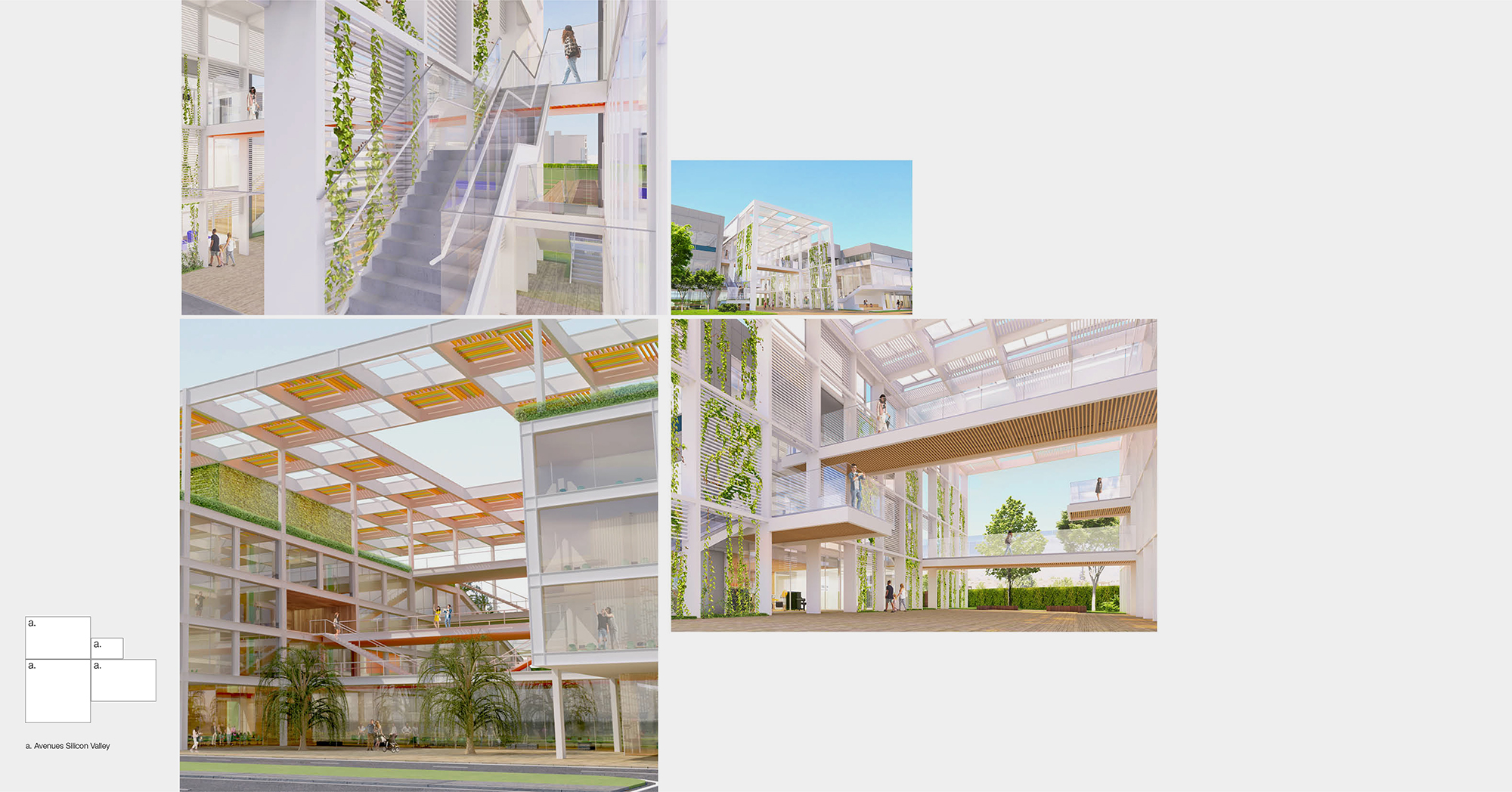 Image © Efficiency Lab for Architecture
Image © Efficiency Lab for ArchitectureHere, as part of an early design charrette for the Avenues Shenzhen Masterplan, a series of bridges that connect all the buildings of the campus, in addition to extending out to connect to Shenzhen University’s recreational space, terminates at the Sky Quad.
The Sky Quad connects 4 of the main academic buildings on the site, in addition to creating a spatial experience within the bridge and on the ground plane beneath it. The figure of the Sky Quad is projected to the ground plane and frames a central area of the campus which includes the main playground of the school in addition to much of the main campus walk. Circulation from the Sky Quad to the ground becomes experiential as well with stairs and floating breakout spaces to help frame the central and multi-level urban campus quad.
The first phase of the Shenzhen Master Plan Bridge is completed and connects the built academic buildings of the campus, in addition to creating a new connection with the existing landscape, such as the historic banyan trees on the site. Users of the bridge now have a new experience of the banyan trees as they pass through the tree’s willowing canopies.
Typologically inherent to the Bridge is span and connection, however the termination points are also a critical feature. These termination points are an additional way of creating a unique spatial experience and can become part of the landscapes and creating vertical playgrounds and spaces for recreation.
The Portal, as part of the Avenues Silicon Valley Master Plan, is used to bridge two of the existing office buildings on the site to create more connectivity within the Campus. There are 2 physical bridges that exist to create a direct connection at the 3 levels of the building. However, more notably, the portal itself becomes an act of bridging, where the previously void between the buildings becomes enlivened as the portal acts as a spatial bridging moment.
At a larger scale, the bridge acts as an important piece of connective urban and landscape infrastructure. Here, the Oblique Line connects the newly developed Moynihan Train Hall to the High Line, in addition to creating a new transit line that connects one of New York’s oldest transit hubs, Penn Station, to the future of New York transit hubs in Queens. The Jetty, as a landscape feature mimics the traditional typology of the waterfront jetties in the area and creates a new experience, or connection to the existing waterfront and port.


